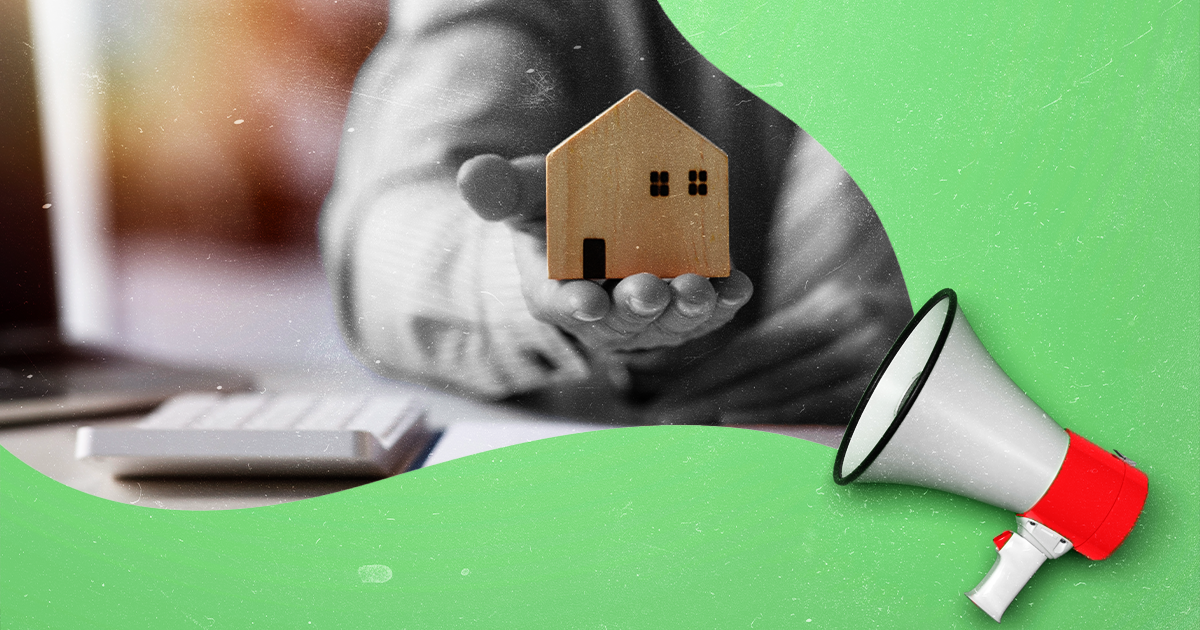The Psychology Behind Apartment Branding

Turning a mere dwelling into a beloved home is no accident. There's something about certain apartments that just feels like home from the moment you step inside. Your apartment is more than just a place to live; it's a canvas for emotions and experiences. Branding is a powerful tool that can influence consumer behavior and decision-making. This is especially true in the apartment industry, where tenants are often driven by emotions when choosing a place to live.
How Branding Influences Consumer Behavior
Branding elements like logos, imagery, and messaging can profoundly impact how tenants perceive and interact with their living spaces. For example, a well-designed logo can create a sense of professionalism and trust, while inviting imagery can produce feelings of comfort and community.
Branding Identity and Expression
The manner in which you communicate, the unique symbol that represents your property, and the images that complement your narrative all play roles in forging an emotional bond with your clientele. It's essential to consider what character you want your brand to embody or symbolize. What sets your property apart? Is it a rich community, an environmentally conscious haven, a trendy urban retreat, or perhaps a hidden treasure? Deliberate on this in conjunction with the specific customer or tenant base you aim to attract, allowing your choices to steer the message you convey to the market.
Furthermore, a well-considered and precisely targeted tagline can significantly shape your brand identity. When paired with your logo, just a handful of well-chosen words or a brief phrase can anchor your brand and provide prospective customers with an immediate sense of delight upon first sight. The more attention-grabbing, the better!"
By understanding consumer psychology, property owners and managers can tailor their branding to evoke the desired emotional responses from tenants. For instance, a brand that positions itself as a luxury community may use high-quality imagery and messaging emphasizing exclusivity and sophistication. Conversely, a brand targeting budget-conscious tenants may use more down-to-earth imagery and messaging highlighting affordability and value.
The Impact of Branding on Decision-Making
Decisions related to renting an apartment are often complex and involve a variety of factors, such as location, amenities, and price. However, emotions also play a significant role in the decision-making process.
Branding can sway tenant decisions by creating a positive emotional connection with a property.
For example, a brand that positions itself as a fun and vibrant community may attract tenants who are looking for a lively social life. On the other hand, a brand that positions itself as a peaceful and serene community may appeal to tenants who are looking for a relaxing place to call home.
Effective branding can also create a sense of trust and reliability, which is essential for tenants who are making a significant financial commitment. When tenants trust a brand, they are more likely to sign a lease and become loyal residents.
Psychological Principles Used in Apartment Branding
Apartment branding leverages a range of psychological principles to create powerful brand identities for living spaces. Some of the most common principles used include:
Color Psychology
Colors can create certain moods and emotions, which is why they are often used strategically in branding. For example, blue is often associated with feelings of trust and security, while green is associated with nature and tranquility.
Storytelling
Stories can connect tenants with a property's history and values. For example, an apartment building that was once a historic hotel may tell stories about its past guests and employees and it can be done simply just by hanging pictures of Historic guests on front walls. These stories can create a sense of community and belonging among residents.
The Psychology of Aesthetics
People are drawn to visually appealing things. Apartment branding often uses high-quality photography and videography to showcase a property's best features. This can create a positive emotional response in tenants and make them more likely to choose to live there.
Targeted Branding Identity
Building a distinct and targeted brand identity for your property goes beyond superficial aesthetics. It's about curating an emotional narrative that resonates with your intended audience, creating a sense of belonging right from the first interaction.
Show your property as a storyteller. Every element – from the logo, messaging, to the images portraying your narrative – contributes to shaping a cohesive identity. Before establishing your brand's visual elements, consider the character you want your property to embody. Is it a vibrant urban sanctuary or a serene retreat nestled in nature? This essence guides your branding choices, reflecting the soul of your property.
Furthermore, the fusion of a well-crafted tagline with your logo can encapsulate the essence of your brand, triggering immediate delight in the eyes of prospective tenants. An attention-grabbing tagline acts as the beacon, swiftly conveying the vibe and essence of your property, aiming directly at the hearts of your target audience.
This targeted approach ensures that every visual and communicative aspect of your property's brand speaks directly to the desires and aspirations of your potential tenants, making it more than just a place to live – but a place to call home.
Quick Guide to Color Psychology
It's more than a matter of personal preference or design aesthetics as you must be aware that each color carries its own distinct meaning, capable of eliciting specific emotions and motivating particular responses from tenants.
- Earth tones, including deep reds and browns, create a sense of warmth and comfort, making tenants feel right at home.
- Greens convey tranquility and well-being, fostering a sense of peace and a healthy living environment.
- Red tones evoke excitement and action, encouraging tenants to take decisive steps.
- Blue exudes a sense of calm and trust, making tenants feel secure and at ease.
- Black and purple signify luxury and elegance, adding a touch of sophistication to your property's image.
Fonts: Choose wisely to communicate your brand's personality
Just like color selection, fonts play a vital role in visually communicating your brand's personality. Do you want your brand to be perceived as hip and young, classic and timeless, sophisticated or playful? Choose two complementary fonts that can be used consistently across all of your marketing materials.
Within your property's identity system, you want to strike a balance between readability and individuality. For example, a beautiful sign at your entrance can give tenants a sense of pride in where they reside. The goal is to create an identity that people can connect with, get inspired by, and feel good about coming home to.
Here are some tips for choosing fonts for your apartment complex:
- Consider your target audience. What kind of fonts do they like? What kind of fonts would appeal to them?
- Be consistent. Use the same fonts across all of your marketing materials, including your website, social media, and print ads.
- Choose fonts that are easy to read. Your fonts should be clear and legible, especially when used in small sizes.
- Choose fonts that are visually appealing. Your fonts should complement your brand's overall look and feel.
- Don't be afraid to be creative. There are many different types of fonts available, so don't be afraid to experiment until you find the perfect ones for your brand.
In short, your property always takes the spotlight, but it's your responsibility to capture people's attention. Apartment branding involves the art of making a meaningful connection with prospective tenants and providing them with a customized experience. When you manage to seize a customer's interest, it must be compelling enough to persuade them to delve deeper into the complete package.
Some examples of Apartment brands that are successfully using Psychological Principles
Several apartment brands have successfully incorporated psychological principles into their branding, creating a compelling and memorable identity that resonates with potential residents. Here are a few examples:
- EQ Living: This apartment brand appeals to the emotional quotient (EQ) of potential residents, emphasizing the importance of creating a sense of community and belonging. Their branding highlights the vibrant social spaces, community events, and overall sense of camaraderie within their apartment communities.
- Sonder: Sonder's branding focuses on the concept of "sonder," the realization that each individual has a rich and complex inner life. Their marketing materials and messaging evoke a sense of empathy and understanding, appealing to those seeking a place to connect with others and explore their own personal growth.
- The Collective: The Collective's branding revolves around the idea of a shared living experience, emphasizing the benefits of co-living and the creation of a dynamic community. Their marketing materials showcase the communal spaces, shared amenities, and opportunities for collaboration, targeting individuals who value a sense of connection and shared purpose.
- Common: Common's branding centers on the concept of "common ground," emphasizing the shared values and interests that bring people together in their communities. Their marketing materials highlight the diversity of their residents, the vibrant events they host, and the sense of belonging they foster.
- The Guild: The Guild's branding appeals to individuals seeking a sense of purpose and belonging, positioning their apartments as a place to connect with like-minded individuals and pursue shared passions. Their marketing materials showcase the various clubs and groups within their communities, highlighting the opportunities for personal and professional growth.
These examples demonstrate how apartment brands can effectively utilize psychological principles to create a distinct and appealing brand identity that resonates with potential residents. By understanding the motivations and aspirations of their target audience, brands can craft messaging and imagery that evokes positive emotions and aligns with the desired lifestyle of their residents.
Conclusion
The art of apartment branding goes beyond mere aesthetics, it's about creating a meaningful connection with prospective tenants and providing them with a customized experience. By leveraging psychological principles such as color psychology, storytelling, and targeted branding identity, property owners and managers can craft compelling brand identities that resonate with potential residents.
Through effective branding, apartment brands can evoke positive emotions, provide a sense of belonging, and establish trust and reliability with tenants. Examples like EQ Living, Sonder, The Collective, Common, and The Guild illustrate how successful apartment brands incorporate psychological principles to create memorable identities that appeal to their target audiences.
Ultimately, apartment branding is about more than just renting out living spaces; it's about transforming dwellings into beloved homes where tenants can thrive and connect with their communities. By understanding the motivations and aspirations of their residents, apartment brands can create environments that enrich lives and foster a sense of belonging for all who call them home.




